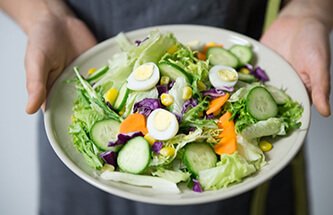Superfoods for Managing Attention Deficit Hyperactivity Disorder (ADHD)

There’s good reason why so many health professionals tout the benefits of diets rich in fresh fruits and vegetables, lean proteins, whole grains, and low-fat dairy as part of a treatment plan for so many different health conditions—from hypertension to heart disease and from type 2 diabetes to attention deficit hyperactivity disorder/attention deficit disorder (ADHD/ADD). Diets rich in antioxidants, vitamins, minerals, fiber, and phytonutrients keep blood sugars in check, maintain adequate energy, and steady mood and mental focus. Compare this to the typical North American diet, which includes too many processed foods loaded with artificial additives, trans fats, and refined carbohydrates, and it shouldn’t be shocking that doctors have established a link between children who consume this processed diet and a spike in ADHD diagnosis.
If your child has been diagnosed with ADHD or ADD and you’re not convinced prescribing long-term stimulant medications is the answer, try incorporating the following ADHD superfoods to help manage and decrease symptoms:
1. Spinach
It turns out that in contrast to Popeye the Sailor’s claims, spinach is actually a brain-boosting food. This tender, leafy green is loaded with vitamins and minerals that increase brain function and brain circulation (vitamin Bs) while blocking free radical damage (vitamin E). Plus, you can incorporate spinach in so many dishes on the sly. Try it in stir frys, smoothies, salads raw, and as a healthy sandwich topper.
2. Salmon
This fatty fish is recommended in so many diets to help treat so many conditions for good reason! For ADHD patients who struggle with hyperactivity, salmon is know to deliver plenty of protein, omega-3 fatty acids, and the amino acid, tryptophan, which combined work to regulate the brain and central nervous system to calm mood and trigger serotonin production to improve alertness and focus. Plus, even for non fish lovers, salmon is a milder cut that can be prepared so many different ways.
3. Flaxseed
Again with the fatty acids (thanks salmon), flax seeds contain a ton of omega-3 fats, known as ALA (alpha-linolenic acid), which have been linked to improving energy, mood, focus, and behavior in young ADHD patients. Flax can be ground into smoothies or sprinkled on top of cereal to support nutritional imbalance, and childhood development and behavior.
4. Eggs
When it comes to protein, eggs deliver a complete protein, packed with essential vitamins that help to balance diet and help manage ADHD symptoms in children. For instance, the protein in eggs can aid concentration and level out mood to prevent behavioral outbursts. Hard Boil an entire dozen eggs and keep them on hand for a quick breakfast or after school snack.
5. Quinoa
This tiny, protein-packed grain has long been touted as a superfood. Quinoa delivers a brilliant array of complex carbohydrates and protein (including all nine essential amino acids), which means when you eat it, your appetite is satiated much longer so you can stay focused and concentrate without any “hangry” moments between meals. To top it all off, quinoa also contains plenty of fiber, iron, riboflavin (or vitamin B2) and manganese to combat any nutritional deficiencies that may be causing inattention.



